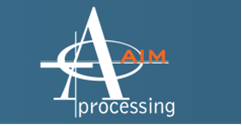Adding Stuffed Olives To The LBO Martini

I entered the Leveraged Buyout Industry during the mid 1980’s working with a couple of entrepreneurs who were focused on acquiring businesses in the automotive industry. It was a tough industry then and it’s a tough industry now, and one at MCM we typically avoid. In a Darwinian way, it forced the survivors of the automotive industry to become world class manufacturing businesses. Back then, small businesses could be acquired for multiples of four to six times operating profit, not EBITDA. The classic middle market LBO was akin to a martini, with equity being the vermouth. The typical deal structure was 10% to 20% of the purchase price in equity, with a seller note filling the void left after senior debt. Modest growth in earnings and the reduction of debt provided for strong equity returns.
Fast forward to 2010, and the dynamics of the LBO (now private equity) elixir have changed dramatically. In current mixology the standard LBO martini is now a two to two ratio and it’s no longer garnished with just one olive or lemon peel. Given the modest growth outlook for the economy over the next few years with entrenched competitors battling for their slice of the pie a private equity firm must add multiple olives and they must be stuffed with value-add. Today, it’s critical that private equity professionals and more importantly their management partners focus on driving shareholder value through innovation and modern management practices. At MCM, we have focused on backing or recruiting CEO’s and other key executives with a mastery or intellectual interest in continuous improvement. To further perpetuate this interest, MCM hosts a CEO Summit where we gather to discuss best practices and emerging business concepts. For being such a small organization, we are fortunate (by design) to be surrounded by a board of advisors, consultants and management partners with expertise across many disciplines such as product innovation, pricing strategy, e-marketing, and world class manufacturing. One of my interests over the years has been centered on manufacturing and supply chain matters.
Each of us is a product of our prior experiences and I believe we learn more from our mistakes than our successes. During the late 1980’s we had a blown deal on our hands, I drew the short straw and was tasked with selling the business. It was a division of a platform company we were building, which manufactured wire formed products for the automotive industry. From a manufacturing perspective, this was a complex business. Nearly 1,000 low volume SKU’s were processed across a dozen different operations. Forklifts buzzed through the factory and work in process inventory abounded. Our labor efficiencies were great but our on-time delivery performance was abysmal as were our inventory turns. Being a leveraged deal, cash was tight and the division couldn’t make any money.
During college, I had taken several cost accounting classes and understood the company’s cost accounting well, as did the portfolio company’s management team. Unfortunately, our cost accounting mind set was the root of our problem. And soon after pulling that fateful straw I was introduced by an operating executive to “The Goal”, a book written and first published in 1984 by an Israeli physicist, Eli Goldratt. I remember being engrossed in the book and devoured it over the course of a weekend. Written as a novel, the book provided a great primer into the “Theory of Constraints” (TOC). Thus began my interest in the field. Shortly after the goal was published Michael George, another physicist by education, upon his return from Japan authored a book titled “America Can Compete” highlighting his studies of the Toyota Production System (TPS) which he termed demand flow manufacturing. At the time, Japan was the China of today, a real competitive threat to the United States manufacturing industry. Much to my wife’s (then girlfriend) chagrin, I read that one the following weekend. Today, TPS is more commonly known as Lean Manufacturing. TOC and TPS share several similar and other complimentary concepts and have been integrated with other practices such as six sigma.
Both TOC and TPS turned cost accounting on its head. Don’t get me wrong; understanding factory costs is important to profitability. However, driving costs out of a system, is more about improving processes, reducing non-value added activities, and increasing productivity rather than measures of labor efficiency and burden allocations. Our wire form factory focused on all of the traditional cost accounting measurements with allocations of burden to work centers, labor efficiencies (actual vs. standard labor hours), and economic order quantities all driving backward decision making. Management was working with a traditional batch and queue mentalityLots of units were processed to gain labor efficiency and to amortize set up costs, and in turn those units sat in bins all over the factory or were shuttled in and out of a work in process storage area. We had far more people than necessary, particularly indirect labor, more floor space than necessary and cash tied up in inventory. In a self-fulfilling way, because of our long cycle times, management built to forecast, which was invariably wrong. So, while we had lots of inventory it was the wrong inventory and on-time delivery suffered. But hey, our perpetual inventory accuracy was great. Fortunately, we sold the business but not before it had been turned around.
A couple of years later, another platform business, a Tier 1, automotive interior supplier landed Toyota as a customer. Unlike the Big Three, Toyota truly operated with a partnership mentality. They trained the management team in TPS, and over time the company’s key performance indicators (KPI’s) and profitability improved immensely. KPI’s including on-time delivery performance; lead times; plant cycle times; sales and value add per employee and square foot of real estate spaced; Inventory turns, defective parts per million improved quarter- on-quarter.
Over the years we have tried to use TOC and TPS consultants to effect change in organizations, some successful, some not. The challenge is that unless the CEO is a champion of the program, it’s difficult to get them to buy-in. Organizations have inertia and they are difficult to change. Accordingly, most of the senior managers at our portfolio companies typically have mastered or been availed to these concepts in the past. When evaluating new investment opportunities, it’s always interesting to learn what KPI’s the management team utilizes, if any, and what their continuous improvement initiatives are with respect to the foregoing. As a private equity firm it’s important to remember to garnish your LBO martinis whether they are shaken, or stirred.
For more information on our portfolio companies and our firm, contact us today.



